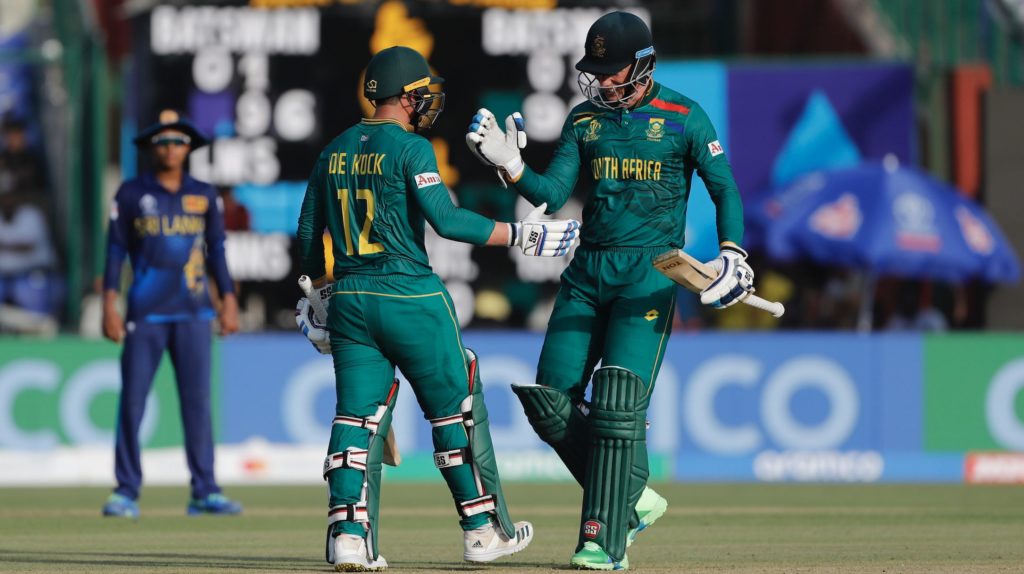If there is to be a World Cup campaign that defies expectation, it will be built on a potent Proteas batting effort, writes RYAN VREDE.
For much of the modern era, the Proteas were seen primarily as a side that built their limited-overs challenge on a pace attack. Most recently, they’ve benefitted from the emergence of highly competent spinners, Keshav Maharaj, Tabraiz Shamsi and Bjorn Fortuin among them.
However, in 2023 they’ve been among ODI cricket’s premier batting units and carried that form into their opening World Cup match against Sri Lanka, where they posted a tournament record of 428.
With Saturday’s 102-run victory, they’ve won nine of 13 ODI matches in the calendar year. Eight of those 13 matches came against England and Australia, who are widely considered to be among the world’s best ODI teams. Notably, their recovery from a 2-0 series deficit against Australia was built on three consecutive 300-plus scores (they scored 416 in Centurion).
The Proteas average 6.18 runs per over across their 13 innings in 2023, having scored between 300 and 399 four times, between 250 and 299 five times, and 400 or more twice.
Contributions have come from across the line-up. Skipper Temba Bavuma averages 71 in the calendar year, while Quinton de Kock, Rassie van der Dussen, Aiden Markram (who hit the fastest-ever ton in World Cup history) and David Miller have all made significant contributions.
Added to that, Heinrich Klaasen has emerged as a middle-order maestro, who is equally adept at rebuilding an innings as he is accelerating one. Marco Jansen, just 15 matches into his ODI career, has shown signs of being the all-rounder who can solve a No 7 problem that has haunted the team for some time.
Markram is the only player in the top six who averages below 40. That is largely attributable to his inconsistency early in his career. He averages 77 in his last 10 ODI innings, which have included three hundreds and two half-centuries. His innings in Delhi on Saturday was truly special and reinforced the belief that he has shaken off the impostor syndrome that dogged him early in his international career.
REACTION: There’s a see-ball-hit-ball mentality – Markram
Indeed, this line-up stands up incredibly well to the game’s elite units, possessing grafters, game-breakers, and those with the skill to transition between both of those states, in equal measure. And in a World Cup featuring conditions that offer painfully little for bowlers, the Proteas batters’ form is the source of hope.
It remains to be seen how their talent translates under pressure. Gifted South African batting units have folded under it in the recent past, having also come into the tournament hot.
This one is laden with experienced international batters. Their temperament will be examined in the games ahead in ways Sri Lanka never did. But it would be remiss not to note the quality of the performance with the willow, which, statistically has become a norm, not an exception.
Their bowlers have struggled while the batsmen have soared, and this may undermine the team’s World Cup challenge, particularly on lifeless decks. This dimension of their game needs urgent attention.
Today, however, we celebrate the rise of a unit that is world-class by every meaningful metric.
Photo: Surjeet Yadav/Getty Images







